The Latin meaning for the word focus, the point at which all things come together, is fireplace. I loved reading this fact: focus = fireplace, or hearth, or that small circle of stones filled with combustible materials around which humans have gathered for millenia to keep warm, or to eat.
Until these last few months, where eight-hour power cuts have become the norm in Zambia, I felt intimidated cooking over fire. Where I grew up the braai, or barbecue, was the “stone circle” around which only men gathered; it was a place where women, bar a few intrepid souls, feared to tread. When I later moved to the United States it wasn’t much different. And though I heated my old stone Virginian house each winter by lighting fires, the main one being the original kitchen fireplace, I’m ashamed to say I never once cooked on it.
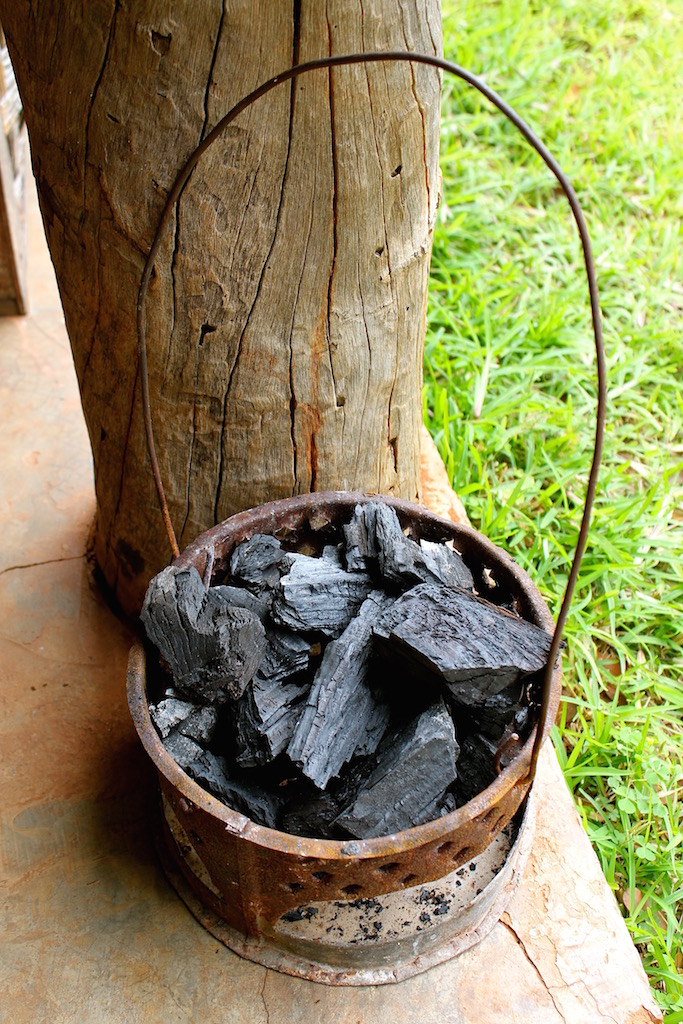
According to primatologist Richard Wrangham, in hunter/gatherer societies the sexes each sought out different types of food: women foraged and handled ingredients that required the most preparation, while men went out to find foods that were more difficult to come by—namely, meat. As a result, Wrangham says in his book Catching Fire: How Cooking Made Us Human, “the rule that domestic cooking is women’s work is astonishingly consistent.” … Since the beginning of time, that is. Yikes.
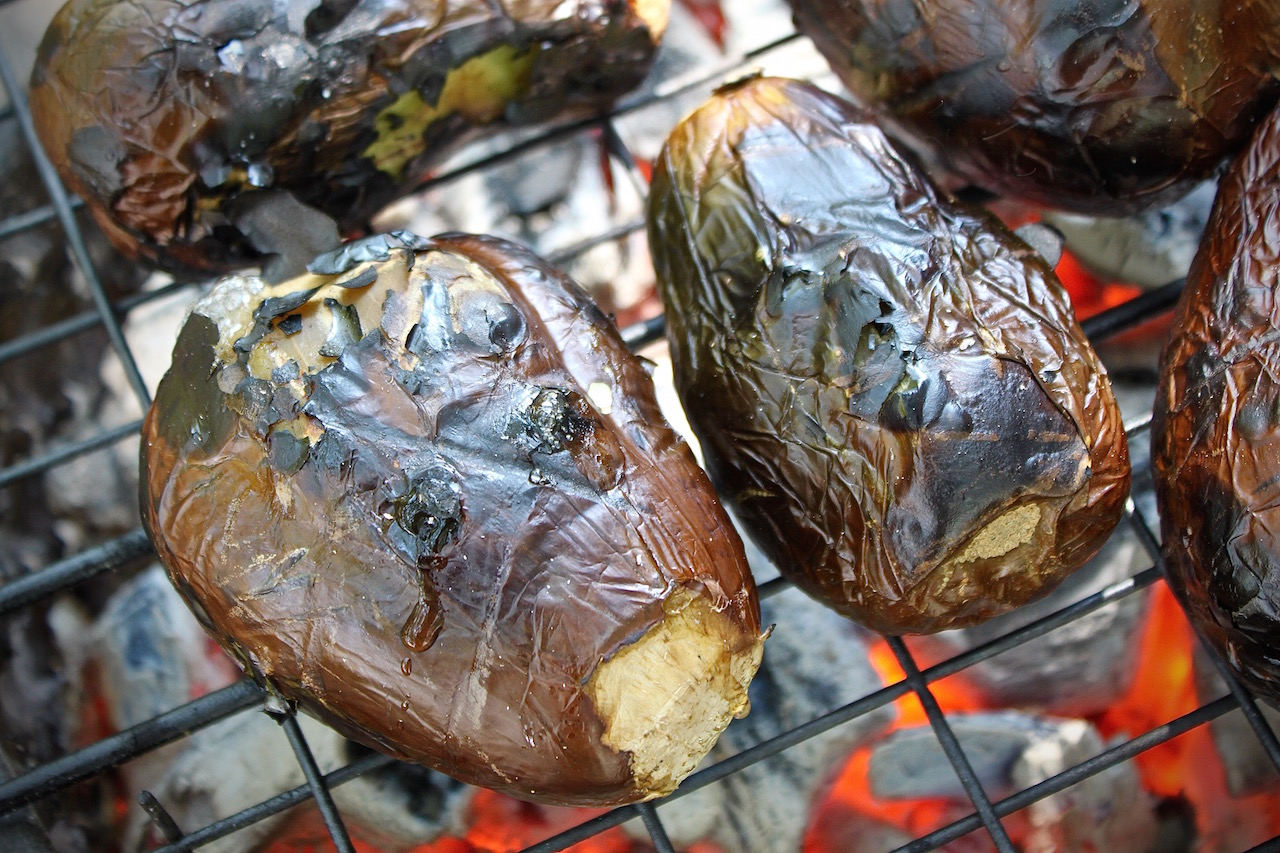
Chris is certain there is little out there that beats the smokey flavor of an aubergine cooked over a fire. It made sense, therefore, that my first step towards the mbaula was taken with aubergines in hand, especially as we are reaping so many right now. The first time I did this I made baba ganoush, echoing the memorable dish Chris ate at the Emerson Spice Hotel in Zanzibar. It was so good I wanted to use smokey aubergines again, this time in a risotto, and the chef to whom I turned for inspiration was Yotam Ottolenghi. No surprises there.
In his aubergine risotto, Ottolenghi uses fresh lemon, but because our citrus trees stopped fruiting a couple of months ago, I used preserved lemon instead. This worked well, especially chopped finely into the fresh herbs. All these backstage flavors, set up to showcase the smokey aubergine, amounted to one of the tastiest risottos we’ve ever eaten.
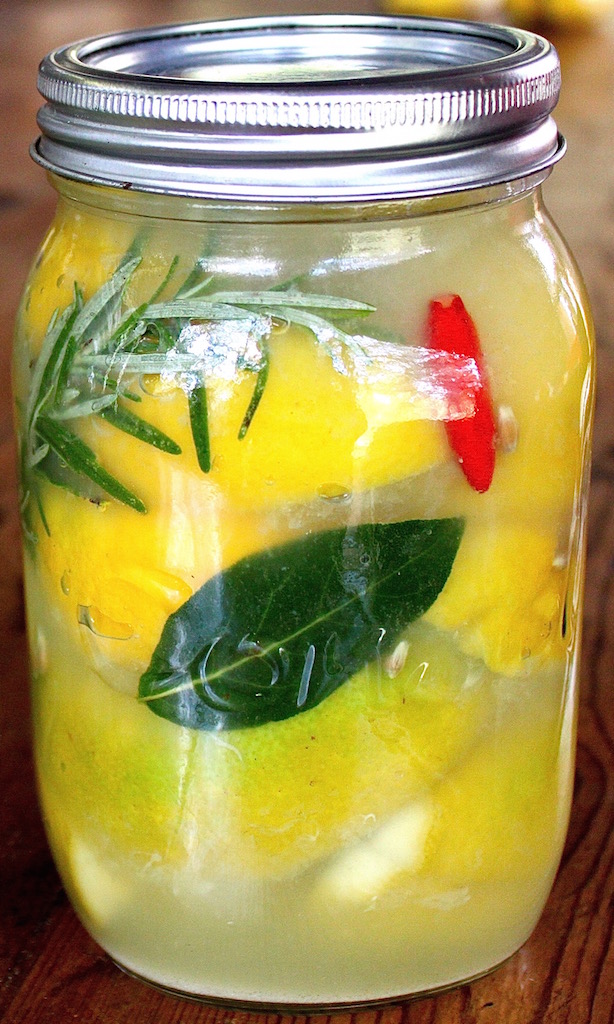
Mbaula-smoked Aubergine & Preserved Lemon Risotto
Yield: 2-4 servings
Ingredients:
- 2 medium aubergines
- 3 tablespoons olive oil, divided 1 + 2
- 3 shallots, chopped
- 2 cloves garlic, finely chopped
- 1 cup arborio rice
- 1 cup white wine
- 5 cups vegetable stock
- 1 tablespoon butter
- 1 tablespoon lemon juice
- 1 tablespoon preserved lemon
- a mix of fresh basil, mint and dill, about a 1/4 cup when finely chopped
- 1/4 teaspoon salt
- black pepper to taste
- 3/4 cup parmesan cheese, after grating
Method:
- Roast the aubergines whole over hot coals, or over a gas hob on the stove (the smokey flavor will be enhanced over a fire, but either works well). While they are roasting turn with tongs regularly until all the skin is blackened and the flesh is soft, about 10 minutes depending on the intensity of the heat. You will know they are ready when the aubergine “deflates.”
- Remove the aubergines from the heat, cool, peel off the skin, and chop into bite-size pieces. (I do this by carefully cutting the aubergine into 1/2-inch rounds across its middle, and then cutting them in 1/2 inch squares lengthwise.) Set the aubergine squares into a colander over the sink or a bowl, coat with 1 tablespoon of olive oil, sprinkle with salt, and press them down with a weight to allow for the excess water to drain out.
- Finely chop the preserved lemon with the fresh herbs, and set aside.
- Bring the vegetable stock to the boil, and then turn down the heat for a low, slow simmer.
- In a heavy-based saucepan heat the remaining two tablespoons of olive oil, add the shallots and cook until soft and translucent, about 5 minutes. Add the garlic and cook for a further two minutes.
- Turn the heat right up, add the rice, stirring well to make sure it is completely coated with the oil, about three minutes. Add the wine and continuing stirring until it has all been absorbed by the rice, about three minutes.
- Stirring all the time, start adding the hot vegetable stock one ladleful at a time, making sure the liquid is all absorbed before adding more. When the stock has been used up, and the rice is soft and creamy, remove from the heat. Gently combine the butter, lemon juice, and chopped preserved lemon and fresh herb mix (saving 1 tablespoon for garnish) into the risotto. Carefully stir in the aubergine squares, the salt and pepper, and all but two tablespoons of the grated parmesan cheese.
- Sprinkle the remaining fresh herbs and grated parmesan on to the risotto, and serve immediately.
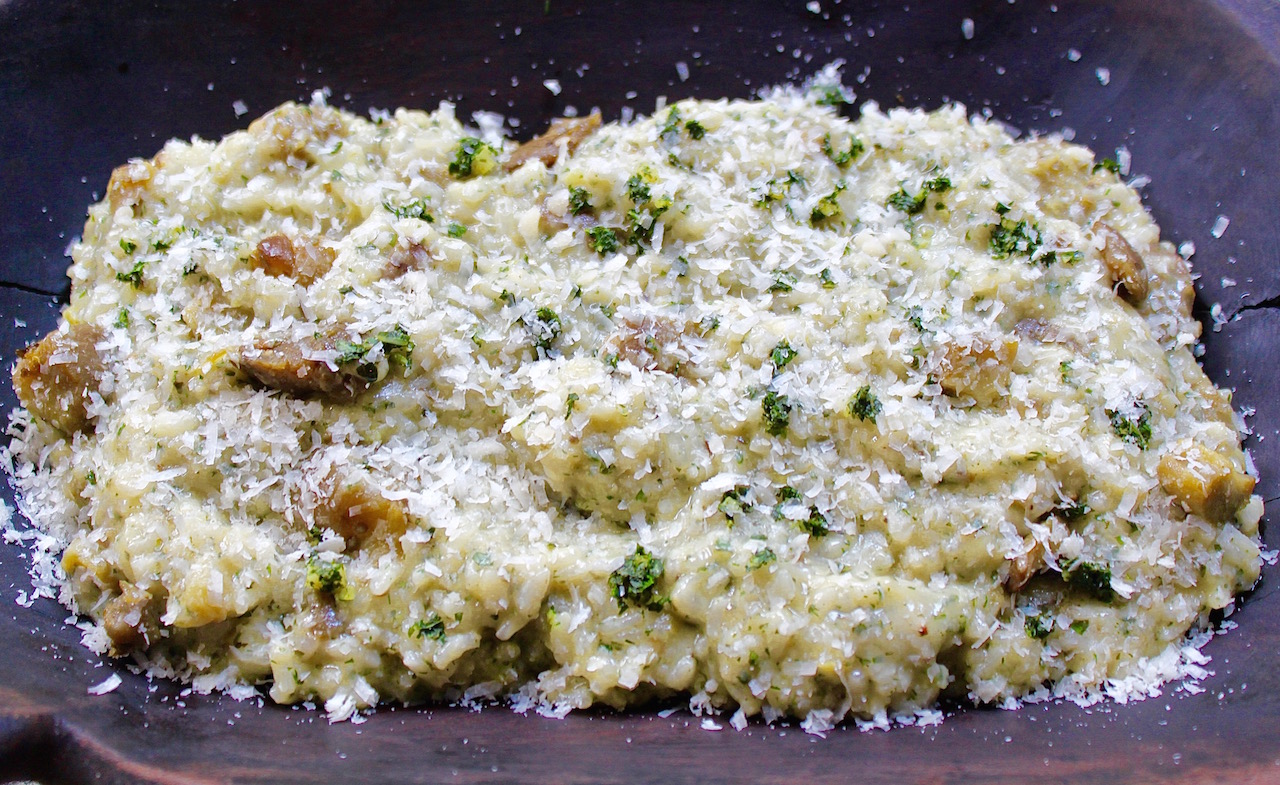

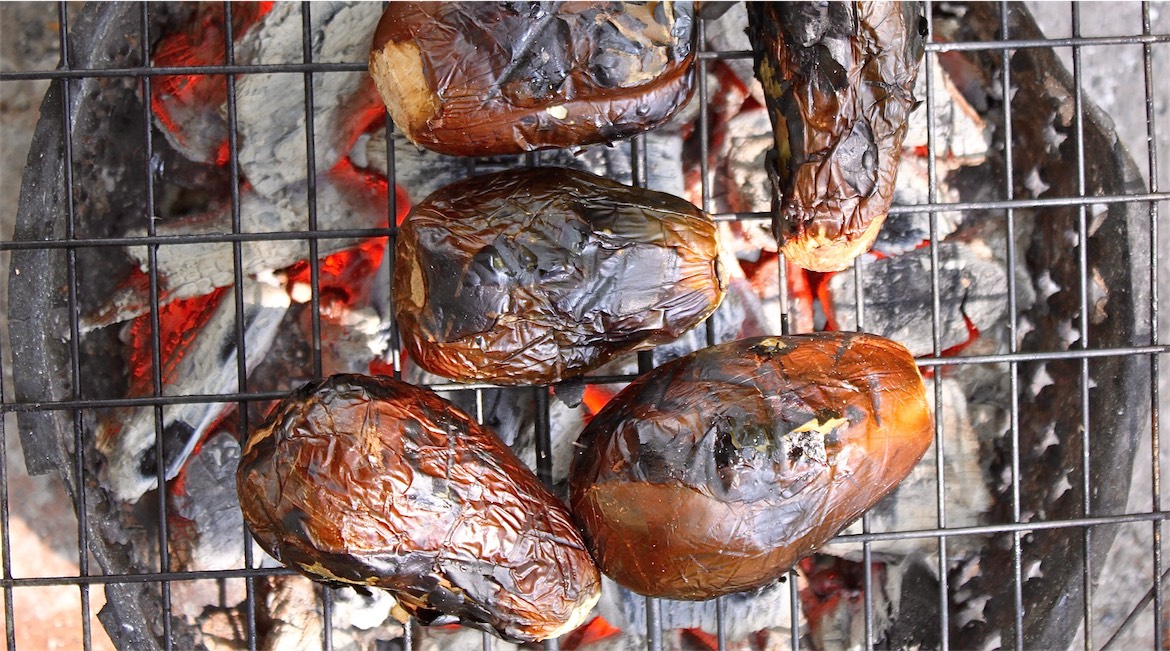
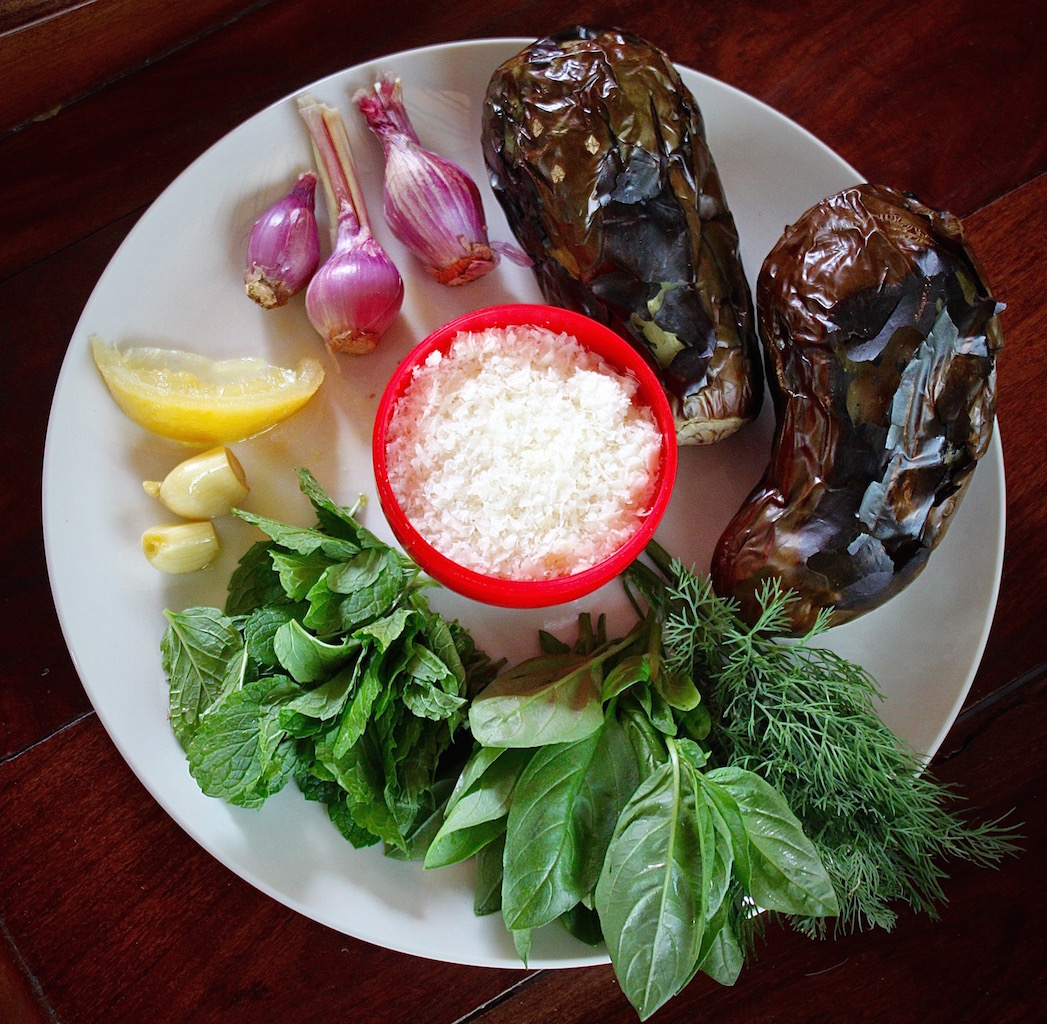



20 Comments
Oh yum…. so want to try this!!!
Thank you, Sue … it really is delicious!
Sad to hear about the power cuts but food still looks great!
As you know, we’re always making a plan in these parts!
Looks just delicious, I’m going to try it too. And now you know why the scourge of charcoal in our beautiful African savannas is not going to be easily replaced.
Thank you for stopping by, Isla. Yes, the electricity problems in southern Africa are really taking a toll. Let me know what you think of the risotto! All the best, Annabel
This looks wonderful, Birthday Girl! If we are using regular lemons instead of preserved, what should we do differently? Use zest?
Thank you, Cynthia! Yes … use the zest from one lemon, along with two tablespoons of lemon juice.
Women! Know your place!
How wonderful to have a plentiful supply of aubergine. I shall try this next summer when we have the wood oven alight – I can almost taste the smoky flavour now.
Haha, Anne, indeed! The flavors in this risotto are wonderful. Each bite brings a new element, and it somehow works so well.
This certainly looks and surely tastes better than the synthetic wood fired smoked oil that one can find in first world supermarkets! Most things smoked on an African wood fire are delicious – or perhaps it is the surroundings that make it?
Thank you, Louise. Probably a bit of both! The smokey flavor of the aubergine is, to me, a critical element of the dish.
I am a recent convert to aubergines, and find I only like them when roasted within an inch of their lives. This looks perfect.
It took me years to acquire a taste, Michelle … and it’s only now that I realize the value in their flavor and texture. They are also very good ‘doers’ in the garden!
This was delicious, Annabel. I roasted the aubergines in the wood oven after making bread. Is there any one spot on your blog where you keep all your recipes? Xx Sula
Yay, Sula! I’m so glad you enjoyed it. We loved it, too … all those bursts of flavor through the creamy risotto. My recipes can be found under the category RECIPES at the top of my home page. They are compiled according to date. Is there any one particular thing you are looking for? If so, I can copy the link to you no problem. Thanks, as always, for your interest … and this comes with love to you. xo
Everything about this post is amazing! Even your charcoal is pretty!!!
Thank you so much, Chef Mimi! Lovely to hear from you again … 🙂
I have returned to this post – my last comment timed out before I could post it. I had started by observing your most excellent photographs, as always! Also, the “focus” interpretation at the beginning – what a wonderful interpretation.
Your mbaula looks very good – better than our cubic varieties here, and I shall copy that form one day. Can you move the grate up and down? I assist in the kitchen through offering company and cleaning, most definitely not cooking! But I do manage the braais – though with little of the machismo most typically associated with the endeavour. In the absence of said mbaula, we put an aubergine into our Cobb this week, with a roast beef. I have come to see what errors I made, since it was quite bitter! I suspect that the primary reason, was that it was in there for nearly an hour – not 10 minutes as advised! This is why my forays into the worlds of food preparation are restricted!
Thanks again for the post!
Thank you for another lovely comment, Greg. Regarding the mbaula, one can’t move the grate up and down; rather, we use graduated trivets. That said, with the aubergines I balanced them on top of a portable grilling mesh over pretty hot coals and turned them with tongs until the skin was blackened and the flesh soft. Give them another go … it will be worth it!
Comments are closed.